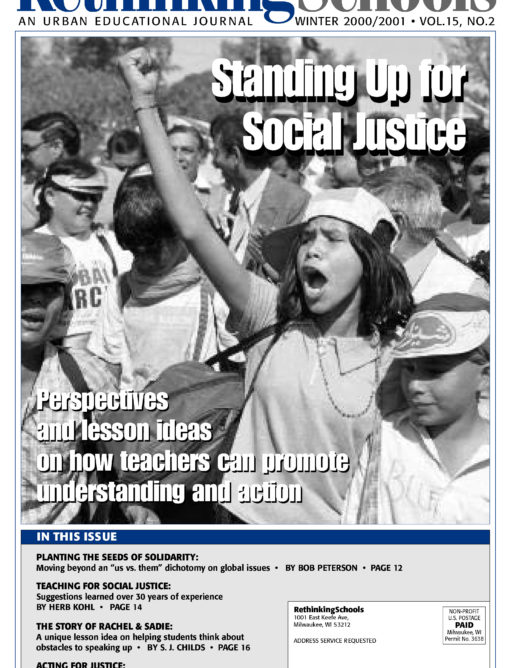Preview of Article:
Michael’s Story
A third-grade teacher helps her students deal with anger and, in the process, learns a few lessons of her own.
I had to consider all the factors that contributed to our classroom dynamic. I had to examine my own beliefs, attitudes, and responses to Michael’s behaviors. I had to consider how my actions as a white teacher of students of color affected Michael’s emotions and responses. I had to try different approaches. These responsibilities weighed on me as I planned my course of action, and I continue to consider them as I reflect on what I did and what I might do differently next time. For example, at the time I characterized Michael’s outbursts as anger. Whether that is the appropriate emotional term, I am not sure; perhaps he was expressing frustration, or loneliness, or pain. I realize, in retrospect, that I used the term “anger” to describe strong emotional outbursts that may have had their origin in any number of emotions.
Teaching about anger immediately after a conflict with Michael didn’t make sense. All eyes were on him. If I taught about anger during these moments, I would only be singling Michael out and escalating the problem. The rest of the students would pick up on my cue and would probably label him as an angry person. I might send an incorrect message that the only people who feel angry are those who act out the way Michael did.
Instead, I tried to plan a few simple lessons that would help all students consider what anger is, what other emotions or experiences it is linked to, and how we can respond. Over the course of the next four weeks, I developed and taught four short lessons. I drew upon my own personal experiences with anger and tantrums to put the lessons together. The resources I used were minimal. I am sure there are much more extensive curricula on this topic. The important thing for me and my students was that these lessons helped us create a common framework for thinking about anger. Later I would refer to this framework in crisis moments or in interventions with Michael.
I wanted my students to be able to identify the experiences and emotions that lead to what might be described as angry behaviors. I wanted them to recognize different responses to anger that they and others use. Most important, I wanted students to consider the choices we have for responding to strong emotions such as anger. I wanted them to recognize that when we are upset, we can either choose a course of action that is unsafe or unhealthy for ourselves and others, or we can choose a course of action that is safe and healthy. I hoped this discussion would lead students not only to see that it is unacceptable to allow anger and strong emotions to explode in outbursts, but also to identify and practice safe responses when they feel angry.
I led three discussions with my students. First, we made a list of “things that make us angry.” Students cited a great many sources of anger, from the trivial to the unjust. Some of their responses: “I get mad when I can’t find the remote;” “when people treat me like I’m stupid;” “when we lose part of our recess;” and “when my mom hits me.”</p

